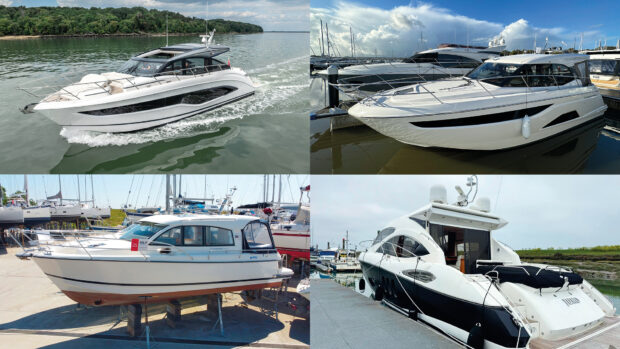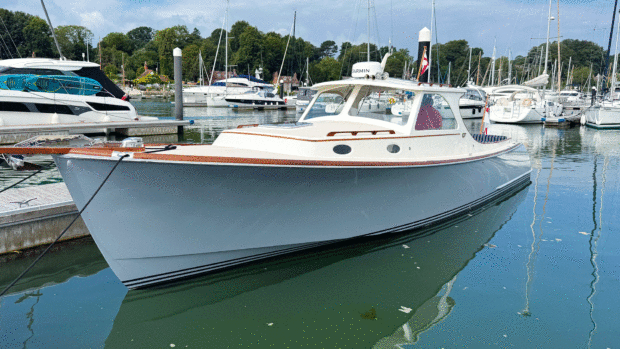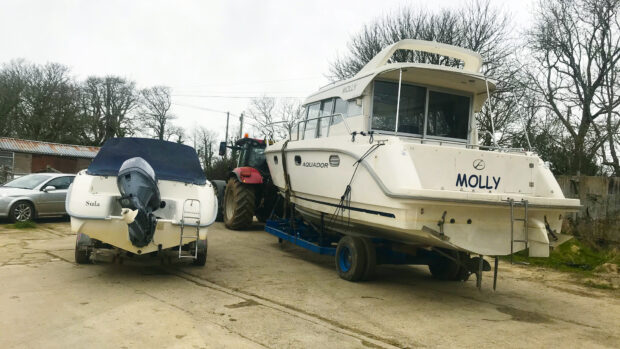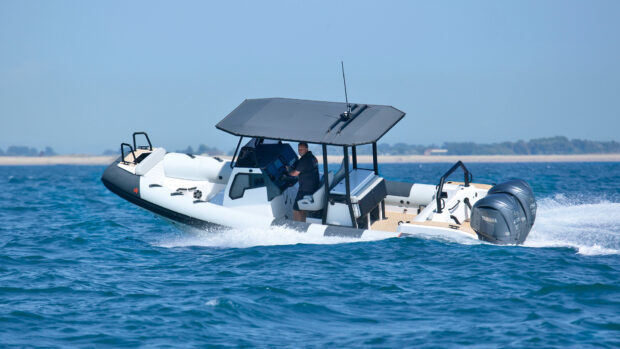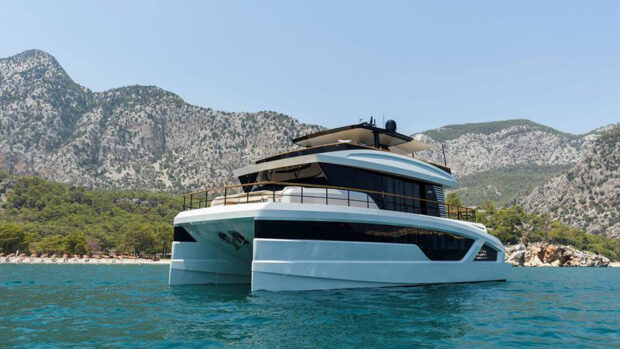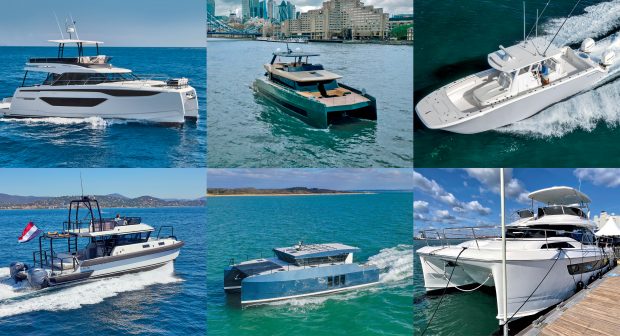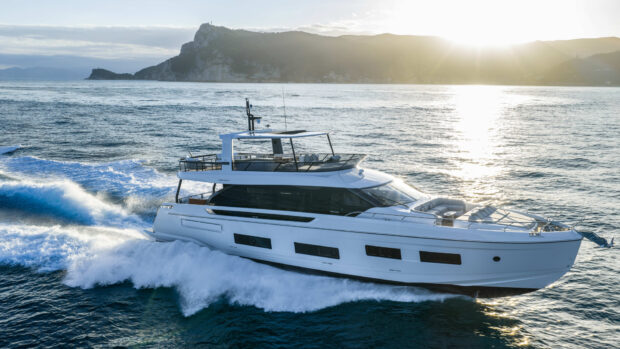Restoring a classic Coronet triggered a wonderful trip down memory lane for boat dealer and classic craft enthusiast David Adams
The Coronet brand may have long since fallen by the wayside but back in 1970, when this particular Coronet 21 was imported into the UK from Botved Boats in Sweden, its deep-vee fibreglass hull and top quality production process was still a novelty in a world of handbuilt wooden craft.
In the 45 years since then it has only ever had two owners prior to me. It was originally purchased by a Mr Millington from his local boat dealer – a little known outfit called Poole Powerboats that later morphed into the rather better known boat-builder Sunseeker!
Mr Millington was an active member of the Royal Motor Yacht Club in Sandbanks. During the summer months it was mainly used for a 2nm dash out of Poole Harbour to the popular anchorage of Studland Bay, and every winter it was tucked up snugly in the RMYC shed. In 1979 it was purchased by its second owner, Russell Culpan, for the princely sum of £2,850. This included a pair of racy maroon swimming trunks left behind by its parting vendor!
Russell is a good friend of mine and like me lives and breathes boats. He was and still is the exclusive UK importer for Boston Whaler; I do the same for Targa and Marex. In his hands Pachazo became one of the busiest boats in Poole. Most summer mornings a ski rope would get flung over the side and we’d all be cutting the wash on our slalom skis.
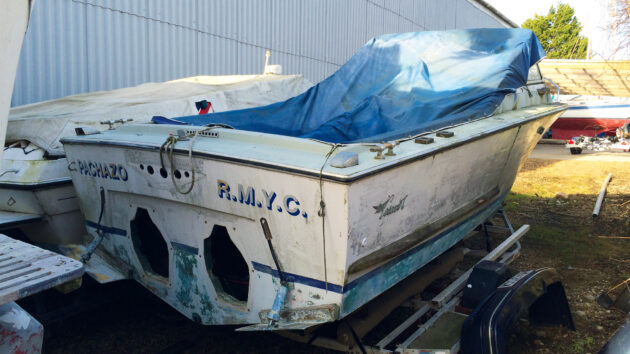
The original twin Volvo Penta sterndrives had been removed for refurbishment in the 1970s
Glory Days
In those days, powerboat racing was still a big attraction in the UK and the annual Cowes-Torquay race became a pilgrimage for Russell and Pachazo, putting its overnighting potential to full use. It was also a chance for Pachazo to meet its makers, the designers Jim Wynne and Walt Walters, who used to come over to Europe to participate in the racing season. One of their factory-supported Coronets won the production cruiser award in 1967 and again in ’69 and ’70.
Pachazo never competed as a race boat but was still impressively rapid in its day, topping out at around 36 knots. It was powered by twin Volvo 130hp petrol engines on outdrives. These were simply marinised versions of a Volvo Amazon car engine.
Article continues below…

‘How I restored one of Dunkirk’s best known Little Ships’

Former pro sailor explains how he restored a classic Fairey Swordsman 40
By today’s standards they were pretty gutless but back in the day it was a luxury to have a twin-engined boat of only 21ft. Nor were they the easiest engines to maintain, with infamously temperamental carburettors and rust-prone exhaust manifolds, which rotted as quickly as you could re-weld and repair them!
After many years of faithful service Pachazo was starting to look and feel a little tired so Russell had it lifted out of the water for what was intended to be a winter refurb. The engines were lifted out and the drives and transom shields removed for rebuild.
However, pressure of work meant the Coronet’s much-needed refurbishment got shelved for that winter… and many more winters to come. When it was moved to a field for long-term storage, its future looked bleak but at some point Pachazo was recovered back to Russell’s boatyard for another long slumber behind their shed.
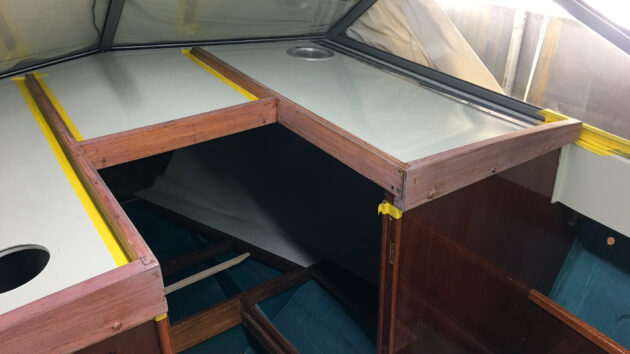
As much as possible of the original woodwork was sanded back and restored
When I plucked up the courage to ask what his plans were for it back in 2018, Russell said I could have it on the condition I saved it from further deterioration. I didn’t need a second invitation and with the help of my shipwright colleague Paul, we hurried over for a closer look.
The ravages of lying uncovered outside were plain to see. The engine box was rotten and there was a whole heap of broken bits. But the famous three-spoke wheel was still there, albeit in a
jigsaw puzzle of shattered pieces. And all its badges were still intact.
For a classic boat fanatic like myself, finding the original components allowed me to maintain some enthusiasm throughout the long and painful restoration process. Russell even found the original ignition keys. But they would not be turning again for a long time yet.
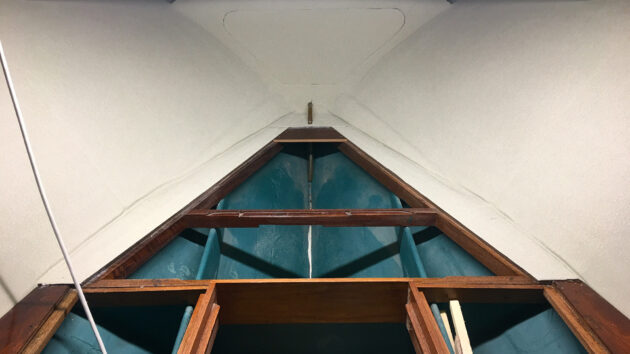
All the bilges were cleaned and repainted prior to the interior being refitted
Engine Woes
Remarkably, the engines and drives had been partially stripped down and sheeted over in the corner of the boatyard shed. This sounded like a blessing until we uncovered them. A hole in the roof had been letting water in for years and it was clear the AQ130s were beyond repair. This was a big problem. We had hoped to restore everything back to its original condition but with Plan A now out of the window, Plan B swung into action.
These old Volvo 130s were once so popular in Scandinavia that it didn’t take long to find some secondhand ones for sale online. We purchased four of them blind and shipped them over to Poole in the hopes we could make two good ones out of the six knackered ones we now had.
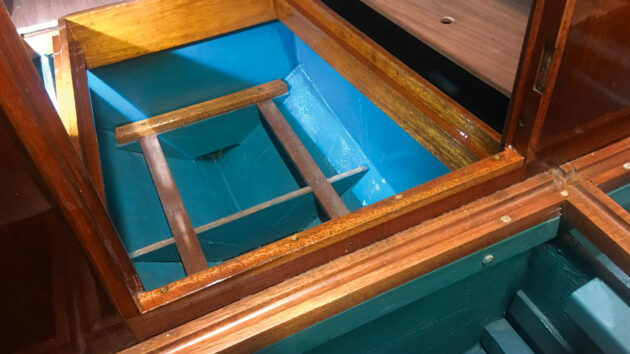
The Coronet 21 was one of the first boats built using a GRP hull and a factory production line
By this point we had spent €1,500 on some vaguely red machinery shipped to us on pallets from Denmark and Sweden, including engines, transom shields and outdrives. Our mechanic mate, Dave, took on the unenviable task of turning this heap of bits into two working engines.
First, he stripped the best two blocks and soaked them in a vat of vinegar. After a few days we could see the basis of two serviceable blocks – although seeing how caustic vinegar can be has put me off fish and chips for life!
After more searching for pistons, rings, big end bearings and the like, he finally had two B20 Volvos turning on the workbench with strong compression. But we were still missing the crucial manifolds. We were convinced we’d be able to locate two serviceable ones somewhere.
Sadly, it proved impossible. After 20 months of fruitless searching, we had to concede defeat. As one of the few parts that it didn’t share with the car engine, none had survived the ravages of time.
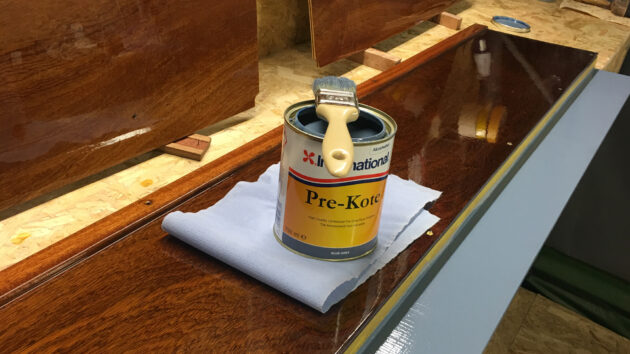
Multiple layers of varnish helped revive the old woodwork
We had to get over the disappointment so Plan C was devised. We’d fit a single brand new Volvo D3 220hp diesel instead – a pragmatic, if expensive, solution. Thankfully our local Volvo dealer colleagues at Golden Arrow sold us a new D3 at trade price, meaning we had everything needed to press ahead with the restoration.
The work started in earnest in October 2016. The boat was pressure-cleaned from stem to stern, removing years of green growth to reveal a battered and bruised but very original Coronet 21. For the first time in many years it had the chance of a future again.
We couldn’t wait to see if that famously glossy gelcoat would come alive again so before wheeling it into the shed we set to work on a small area of it with wet ’n’ dry paper plus cutting compound. It came up a treat so in the shed it went. We stripped the interior and emptied the fuel tank for safety. The petrol extracted was the consistency of jam and as brown as the waste from a sea toilet!
Over the following winter we stripped every single component off the boat with surgical precision, cataloguing and photographing everything so we’d know how to put it all back together again when the time came. We were aiming for a Concours standard restoration.
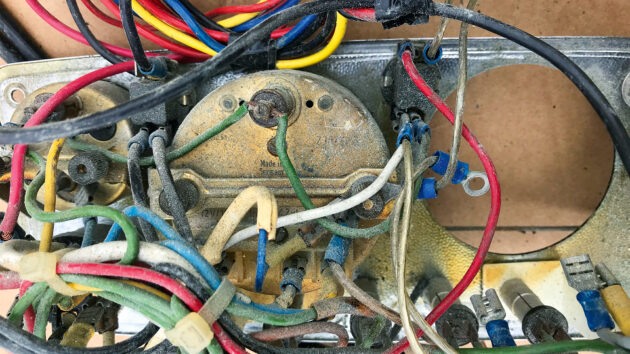
Old wiring
We already knew Coronets were the best- built production craft of their era but now we started to discover the vagaries of their volume build processes. The quality of marine ply and mahogany they had used was exceptional – far better than we could hope to find today – but we also found evidence of several short-cuts that had taken place, such as poor GRP lay-up in hidden corners and a forward bulkhead in the cabin that looked like an afterthought.
Butterfly Moment
We took the decision to replicate every detail as faithfully as we could and only improve elements that would affect the durability and use of the boat for the future. We firmly believed that with all our expertise we could restore the gelcoat to its original glory.
Sometime in the ’70s or ’80s the hull had undergone a ‘protective’ sealing treatment that now proved almost impossible to remove. After trying every conceivable method, we eventually concluded that re-painting it with modern two-part epoxy paint was the only viable solution.
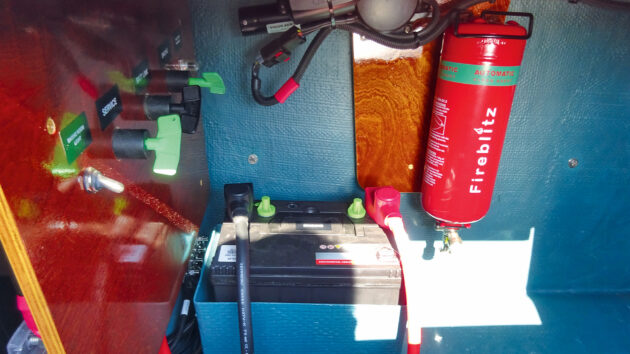
Spotless new battery box and wiring
Our shed was good but not good enough for a perfect finish so we consulted a mate in the trade, Martyn Brake. This proved to be a very lucky break! He had space in his workshop and some spare time so off the boat went for some much deserved spa treatment!
Martyn treated it as a hospital job and the end result was every bit as miraculous as the transformation from caterpillar to butterfly. We had specified the exact Pantone colour match of both the off-white hull and light green deck gelcoat plus the seemingly impossible target of retaining the non-slip pattern throughout the deck areas where the paint could easily settle.
Full of trepidation we drove over to see the finished result. Not only was the colour match perfect but the non-slip areas also looked as good as new. Pachazo appeared 50 years younger!
Martyn had done such a good job that we asked if he could also install the engine and rebuild the transom from its original twin outdrive layout to its new single one. Again, he hit the spot perfectly, including a new enlarged engine box modelled on the original, but a fraction bigger to fit the larger D3 motor.

The finishing line is finally in sight after years of neglect, delays and very hard work
He’d even managed to source the most superb matching mahogany with the classic Coronet deep-red look and natural wood grain. We also gave him the almost impossible task of refurbishing and straightening the windscreen. How he got it so perfect without breaking the glass we’ll never know.
By summer 2019, a much healthier looking Pachazo was back in our shed. Paul and I were so excited by the result of its vacation, our enthusiasm for finishing the job was sky high. Unfortunately, (or fortunately from a business perspective) we were too busy at work to give it our full attention. But little by little our efforts were showing results.
The Devil is in the Detail
The target was to use as much of the original woodwork as possible, including bulkheads, berth bases and surrounding areas. God knows how much elbow grease and how many sheets of sandpaper Paul exhausted bringing them back to life but the results were worth it.
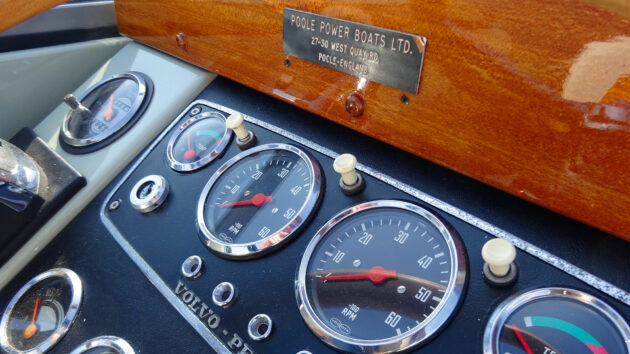
The original dash still looks the part
The forward bulkhead needed replacing as the original one had suffered long term water damage so Paul made an exact copy from a sheet of the best marine ply. He also made perfect replicas of the original upper cabin trim panels, right down to the inspection covers for the navigation lights.
While stripping the cabin we saved a section of the original vinyl lining and managed to find a very close match for it with the help of our local upholsterer, Steve. And, to our astonishment, we removed and stripped the sea toilet down and managed to get it working again.
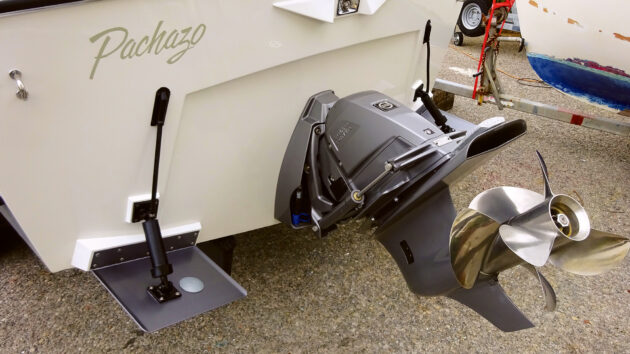
The transom also had to be modified to take a single DPS drive
Paul also started restoring all nine of the original cockpit deck panels, returning them to the condition they were in the day they were first dropped into the boat at the Coronet factory.
By winter 2019/20 the finish line was finally in sight but we still needed binoculars to see it! Delayed by the small matter of a pandemic, Paul and I finally got into gear again in 2022, when our workload permitted.
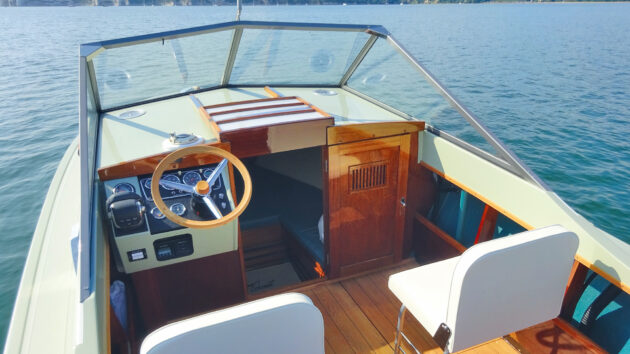
The cockpit is a masterpiece of simple but very elegant Scandinavian design
Stealth displays
Excited as we were by the D3’s performance potential, we didn’t want to spoil the classic look of the helm by adding modern engine readouts so we devised a hidden panel below the main console where we could fit the D3’s data displays.
Once they were fitted, our local Volvo guys at Golden Arrow came over to commission the new engine. We expected one or two teething problems on the day of our first sea trial and sure enough a fuel supply problem called an early halt to proceedings. That was soon sorted and after a very professional re-wire by Seacraft, Pachazo was running like a dream.
Back in the day, Pachazo’s twin 130hp petrols gave it a top speed of about 36 knots but it soon became clear that the single 220hp D3 diesel and its efficient Duoprop drive were more than a match for two old petrol engines.

New owner David Adams from Targa dealer Wessex Marine revels in the Coronet’s legendary handling
On flat water, Pachazo was pushing past the magic 40-knot barrier and that wonderful deep-vee hull was every bit as special as I remembered it, flying over wakes like the thoroughbred racer it was.
One of the first people out on it was its former owner, Russell Culpan, who like me was delighted to see the boat back to its former glory.
So what does the future hold now? Provided the current good weather holds and I’m not too busy selling Targas and Marexes, I’m hoping to embark on a trip to the Solent to resurrect old adventures. It’s taken a long while to get there and perhaps inevitably has cost more than originally intended but I like to think Ole Botved and Jim Wynne would be proud of what we’ve achieved…we certainly are!
 If you enjoyed this….
If you enjoyed this….
Motor Boat & Yachting is the world’s leading magazine for Motoryacht enthusiasts. Every month we have inspirational adventures and practical features to help you realise your sailing dreams, as well as tests and news of all the latest motorboats.
Plus you’ll get our quarterly Custom Yachting supplement where we share the last on offer in the superyacht world and at the luxury end of the market.
Build your knowledge with a subscription delivered to your door. See our latest offers and save at least 30% off the cover price.
Note: We may earn a commission when you buy through links on our site, at no extra cost to you. This doesn’t affect our editorial independence.


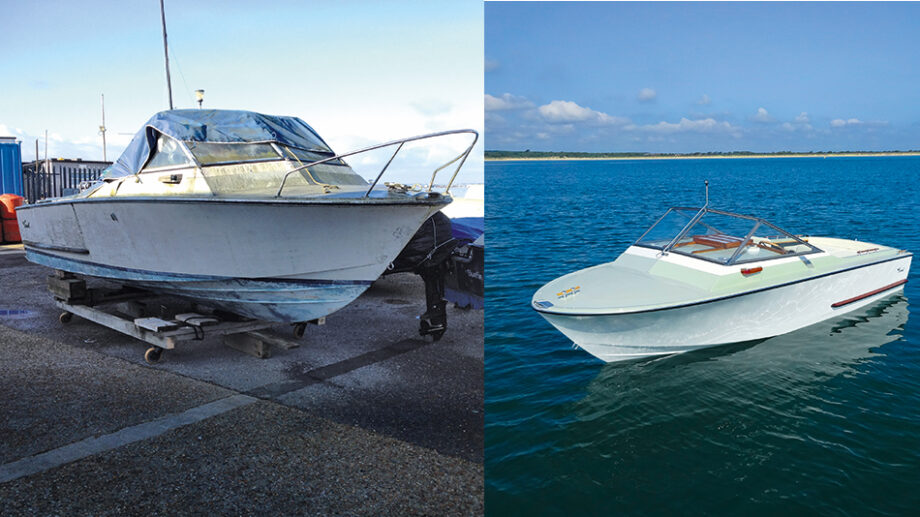
 If you enjoyed this….
If you enjoyed this….